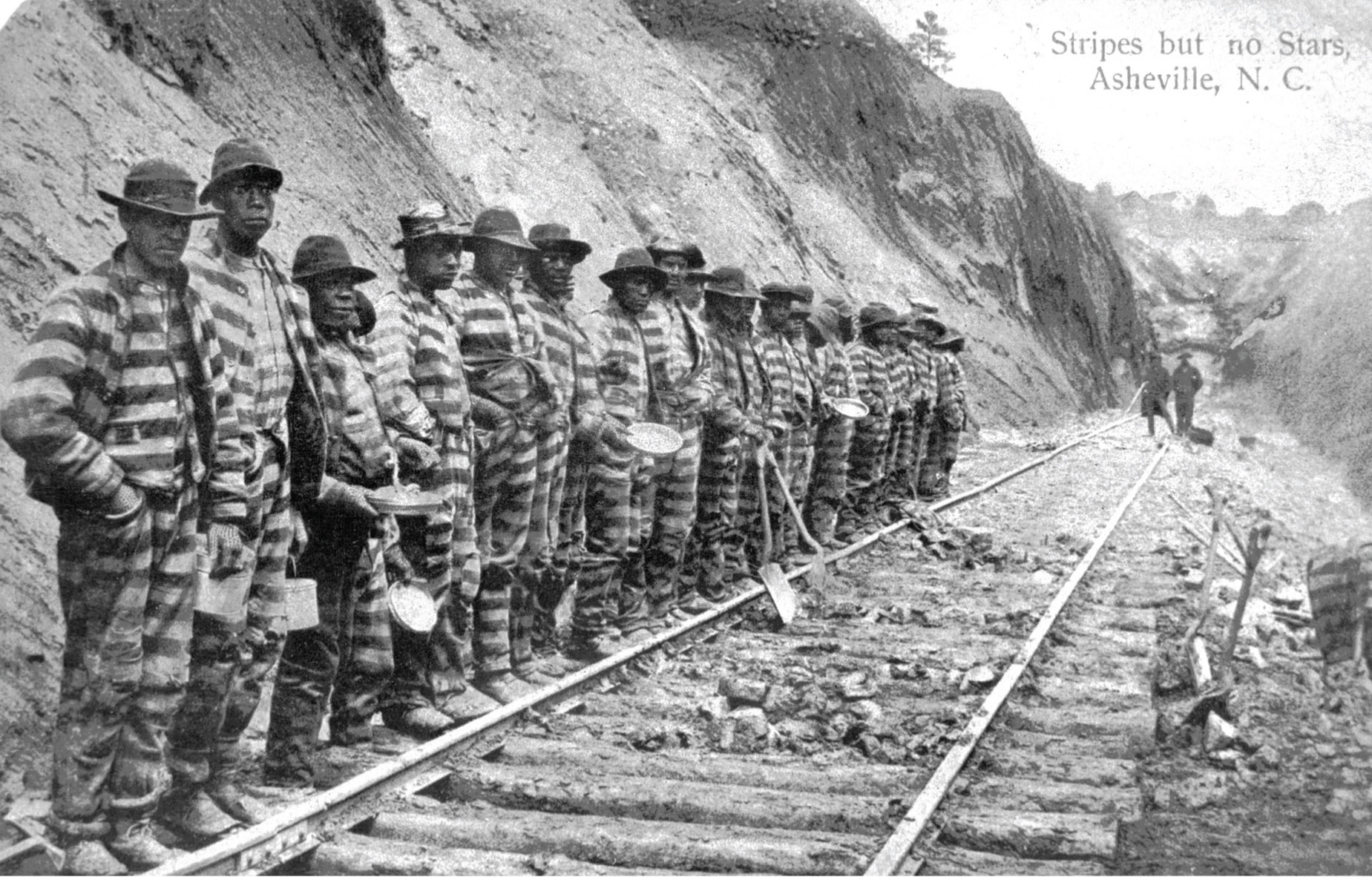Convicts Working on a Railroad (postcard photograph), 1915
The railroad was a symbol of industrial progress in the New South and throughout the nation. Hence, through the convict lease system, southern industrialists capitalized on the use of convict labor to build thousands of miles of track leading from south to north. In the state of North Carolina, roughly 65 percent of the entire prison population was leased out to work on the Western North Carolina Railroad, a state-owned and -operated enterprise. Between 1875 and 1892 an average of 7,800 convicts were detained in North Carolina’s penitentiary system. Nearly 85 percent of these inmates were African American men.
Railroad construction was arduous and hazardous. Prisoners worked from dawn until dusk and then retreated to dirty railroad cars that operated like “rolling jailhouses.” At times, inmates never made it back to their living quarters. One of the most tragic episodes in the history of the WNC Railroad included the day nineteen inmates were killed on the job. These convicts were placed in charge of building an 863 foot tunnel. One day, while crossing the Tuckasegee River to the tunnel, a boat capsized, drowning the shackled prisoners. These detainees were subsequently buried in unmarked graves on a knoll overlooking the tunnel.

Evaluating the Evidence
Question
qZlEFSkumI+4RDWkM046aIeHrp7VYlqxfAxFrX5kgfEVAfBxCB+Hs8unhbMchzLX2mBX8cp7vrru6pxv3YkQzgfNQOB8Y1i97EfA4Z2RimElc0H8qRehM2UDuFGFlOt+ZLKWPI3eCie24sRf++CxSWtEzKgy4HJYjLtDbV7b3WrI7eihCgwq9xcj5jstPKjC4PHaTf4YgW+IDW5vOASFLeD9yrASwk6zXu0M5vAusmODjE4oybsflXnfGMwULuejRAmtg+wuUzUhAvSZMdv6YyE+mTyhqdmhbxKhQX2KGvzbM3CjjxuIokVYQFesyD5hxlXTDXH5WvPPCFhdQuestion
XWKn/pE6WTsfiQcKNYGiFExiEsHrnaIe5xFcwIwfyxXwXB0JIG6Wo2XM5eymbX9zPP1yOXswMgl0irb93HDrrReARnTFP1gg/wvIuKxmaVjT7KdhFA1pC0deb/pelMIg